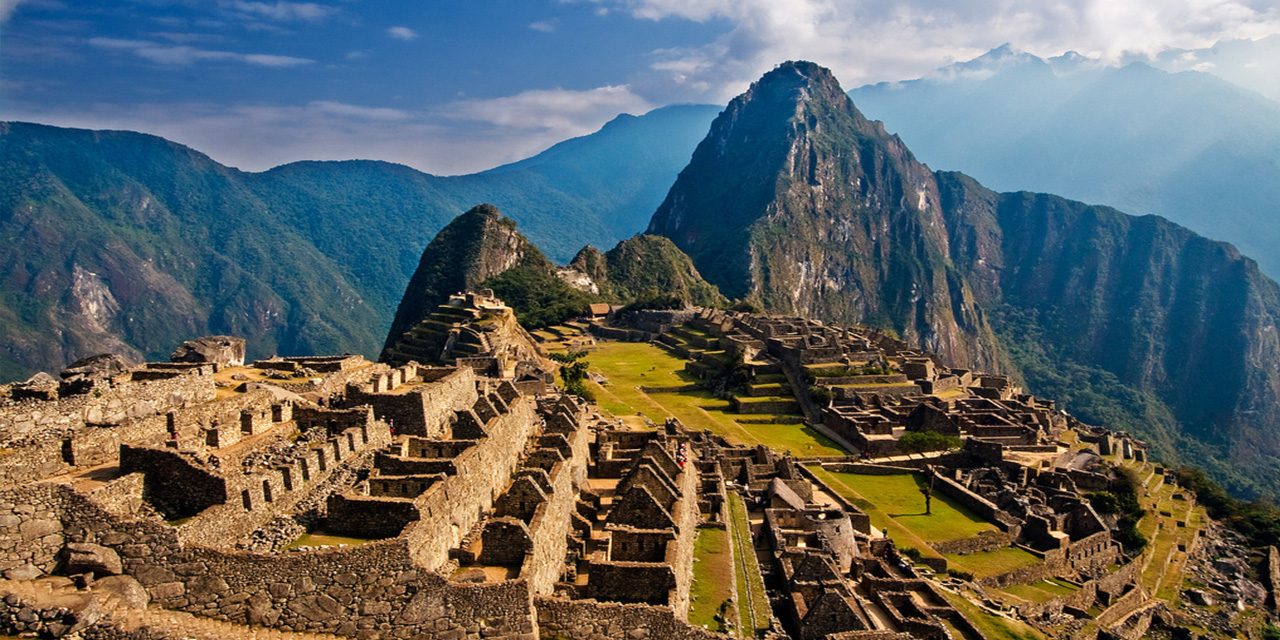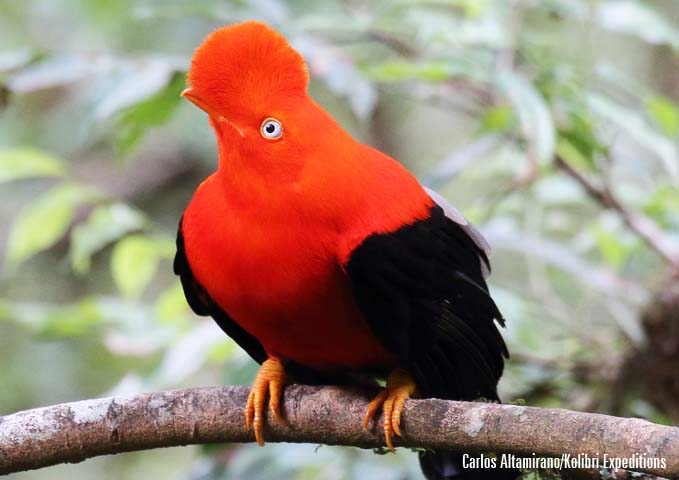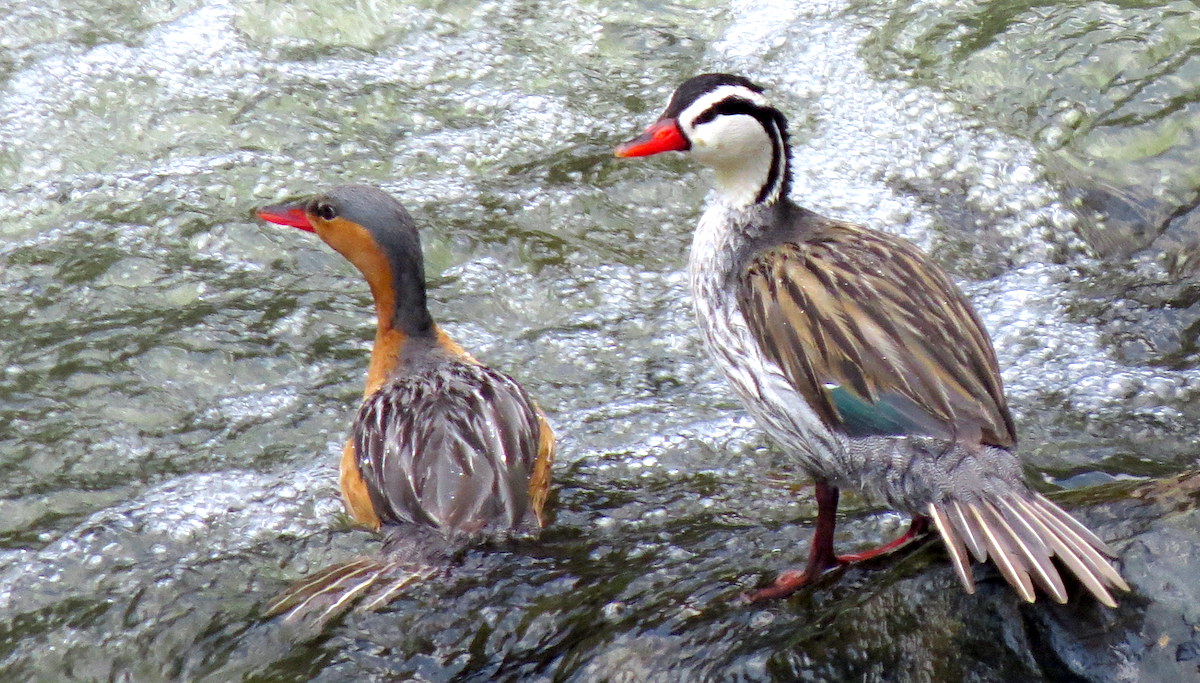Birding Machu Picchu
Undoubtedly, Machu Picchu in Peru is one of the most dreamt of bucket list destinations around the world, and rightly so. The setting over the Urubamba river with the sugarloaf mountain of Wayna Picchu is so breathtaking it would not need an Inca citadel on the saddle to be equally jaw dropping. What is more, there is excellent birding nearby.
In this post I shall give you the background of this classic bucket list destination and world heritage sites, and provide information about birding, wildlife watching and photography opportunities. Finally, I link to some tours of Kolibri Expeditions and 7 Wonders Birding, which include Machu Picchu.
I hope you will share this with others.
When was Machu Picchu built?
Machu Picchu was built around 1450 AD when Pachakuteq was the Inca emperor, and is thus much younger than one may think. It had been deserted and forgotten by the time the Spaniards arrived in 1532. Nobody knows for certain how this could be.
Perhaps some embarrassing defeat in battle with the Anta tribe from the lowlands or some mysterious disease erased it from common memory. This may sound incredible, but without a written language and the ruling class deciding which stories would live memory, it is easy to see how. Just consider that there are people this day and age who deny the Holocaust.
What was the purpose of Machu Picchu?
Since there is no written record before the arrival of the Spaniards (the Incas had no written language) and the Spaniards never found Machu Picchu, it is very hard to pin down the site’s actual purpose. However, the most likely function was that of a royal estate where religious ceremonies took place at certain times of the year, such as during the winter solstice and the equinoxes.
The hypothesis that it had a role as an astronomical observatory has some compelling reasoning.
The sacred Urubamba/Vilcanota river makes an almost perfect half-circle around the base of the mountain from east, north to west, which mirrors the sun’s route during the winter solstice. There are also important constructions at the site that align with the sun’s rising at the winter solstice.
Furthermore, the fact that the Incas, like rural people even today, venerate mountain peaks as deities or representations of mother earth – Pachamama, the many mountain peaks visible from the site, make it likely, that it was a place for worship of mother earth.
Around 750 people could live there at any one time. Potatoes and corn grew on the terraces, but the amount produced could not have supported such a large population, why a seasonal use of Machu Picchu seems likely. Food items must have been be brought in from the outside via the network of the Inca roads.
Since there is very little actually published on Machu Picchu’s function, guides will tell you all sorts of stories – some even including supernatural explanations.
Here are a few that modern studies have invalidated.
The hypothesis that it had role as an astronomical observatory has some compelling reasoning. The sacred Urubamba/Vilcanota river, makes an almost perfect half circle around the base of the mountain from east, north to west and this mirrors the route of the sun during the winter solstice. There are also important constructions at the site that aligns with the rising of the sun at the winter solstice.
Furthermore, the fact that the Incas, like rural people even today, venerate mountain peaks as deities or representations of mother earth – Pacchamama, the many mountain peaks visible from the site, make it likely, that it was a place for worship of mother earth.
It has been estimated that around 750 people could be living here at any one time. The terraces were mostly used for growing potatoes and corn, but the amount produced could not have supported such a large population, which indicates that there was a seasonal use of Machu Picchu, and that food items were brought from the outside.
Since there is very little actually published on the function of Machu Picchu, guides at Machu Picchu will tell you all sorts of stories.
Here are a few that moderns studies have invalidated.
- A sanctuary for the Virgins of the Sun.
A large portion of the bones in graves found at the site were erroneously identified as female, which led to the belief that the site was like a boarding school for the so-called Virgins of the Sun – Mamaconas. Mamaconas were beautiful and skilled girls selected to become wives and muses to the rural class, including the Inca himself. The girls themselves could be nobles and were thus given as tokens by noble families, in a similar manner wealthy catholic families in the past would offer a son to become a priest or a daughter to become a nun.
The Virgins of the Sun education center was the prevailing hypothesis for a long time, but it has been debunked as the original sexing of the skeletons was incorrect. - Coca production.
Only the nobles used Coca which was believed had sacred properties. Coca grows at a lower altitude than Cusco, but usually also lower than Machu Picchu, so Cusco’s imports must have come from other areas. - Defense structure.
In spite of the strategic placement of Machu Picchu, its role as a defense structure is likely minimal, as few arms have been found and the site is oversized compared to what would have been needed as a guard outpost. - Vilcabamba.
Hiram Bingham originally thought he had stumbled upon the last stronghold of rebellious Incas who made guerrilla warfare for over 30 years from a newly built Inca city in the Vilcabamba mountains. While Bingham also visited the Espiritu Pampa site further downriver, but never understood its significance, later explorations, particularly those of Gene Savoy in 1960, has proven Espiritu Pampa to be the true old Vilcabamba. - Coca production. Coca was mainly used by the nobles and had sacred properties. Coca grows at lower altitude than Cusco, but usually also lower than Machu Picchu. It is likely that Coca was supplied from areas that laid lower than Machu Picchu.
- Defence structure. Although the strategic placement of Machu Picchu, its role as a defence structure is likely minimal, as few arms have been found and the site is oversized compared to what would have been needed as a guard outpost.
- Vilcabamba. Hiram Bingham originally thought he had stumbled upon the last stronghold of rebellious incas who made guerrilla warfare for over 30 years from a newly built Inca city in the Vilcabamba mountains. While Bingham also visited the Espritu Pampa site further downriver, but never understood its significance, later explorations, particularly those of Gene Savoy in 1960, has proven Espiritu Pampa be the true old Vilcabamba.
Who discovered Machu Picchu?
As the Spaniards never found Machu Picchu, it remained forgotten over the centuries. Germans explorers may have arrived at Machu Picchu in 1867 or even earlier, and maps from 1874 show that the place was known locally at this time.
In 1911, when the American historian and explorer Hiram Bingham traveled the region, Machu Picchu became known to the outside world. Bingham has since been regarded as the scientific discoverer. Bingham came back the next year with funds from Yale to make thorough scientific documentation.
How many people visit Machu Picchu?
Machu Picchu is a UNESCO World Heritage Site since 1983. It is very sensitive to mass tourism, so in recent years due to the increased interest many policies have been made to make the visits flow better. Although the official limit was recently increased from 2500 people per day to 5940, one now has to follow the same one-way trail, although some shortcuts are available for people who don’t climb stairs well. Different sectors have other limits. For instance, only 400 people per day are allowed to climb Huayna Picchu – the iconic mountain in all pictures’ background. A visit takes around two-three hours, and there are three different circuits to choose from.
In 2018 close to 1.7 million people visited the site. During the 2020 COVID 19 pandemic, the site was closed since mid-March until October, and then in Jan 30, 2021 it closed again as the second wave of COVID 19 hit Peru. It is likely to open again by March or April.
Birding Machu Picchu
One finds excellent birding below the Machu Picchu citadel along the access road and the walking trail to the Machu Picchu entrance. Note that since last year you must bird this area on the same day as one visits Machu Picchu, as you are not allowed to cross the bridge without an entrance ticket for that day. Although it is a steep and somewhat strenuous hike, I recommend birders to purchase an entrance ticket from, say, 11 or 12 AM and use the full morning to get up to the citadel walking and birding on the way.
Birders and especially bird photographers are also recommended to stay at the Machu Picchu Pueblo Hotel, which has very good birding on the grounds, only accessible to guests. The area is very good for males Cock of the Rocks feeding in the fruiting trees. El Pueblo Hotel also has a couple of hummingbird feeders attracting both the endemic Green-and-White Hummingbird and Gould’s Inca, and fruit feeders for various Tanagers and Euphonias.
It is expensive, but worth it if you have the time and money. We offer both discounted independent stays at Machu Pueblo Hotel as well as birdwatching packages, so do contact us before you go if you want to stay here.
Best birds of Machu Picchu
Andean Cock of the Rock. You may find loose leks near Mandor, a couple of kilometers below the bridge over the Vilcanota River and around the helicopter platform next to the railroad track below El Pueblo hotel. The grounds of el Pueblo Hotel are also very good to find feeding birds. Go in the very early morning or the late afternoon (around 4-5 PM) to find calling males at the leks.
Torrent Duck. Often found along the stream from Aguas Calientes and the bridge (Puente Ruinas). Also, look out for this beautiful duck while riding the train from Ollantaytambo to Machu Picchu if you sit on the left side of the train. Unfortunately, it is impossible to book the left side, so it will be at random if you get a seat here.
Inca Wren.

Endemics and special birds.
Many endemic and colorful birds can be seen just below the ruins on the access road and trail, as well as along the railroad line on the way towards Mandor, and the gardens of Inkaterra Machu Picchu Pueblo Hotel. Here are the most important:
Andean Motmot, Green-and-white Hummingbird (endemic), Gould’s Inca (split from Collared Inca), Sclater’s Tyrannulet, Masked Fruiteater (endemic), Black-streaked Puffbird, Versicolored Barbet, White-winged Black-Tyrant, Orange-breasted Falcon (Huayna Picchu), Saffron-crowned and Silvery Tanagers.
How to get to Machu Picchu?
The easiest way to get to Machu Picchu is by going by train. Unless you love train rides, from a birding perspective, to manage your birding time, it makes sense to start the train ride from Ollantaytambo station rather than the Poroy Station just above Cusco, because there is some great birding on the way.
Going to Ollantaytambo, one should make a stop at the excellent wetlands of the shores of Laguna Huaypo for many Andean waterbirds, such as Mountain Caracara, Andean Gull, Andean Lapwing, Yellow-billed Pintail, Yellow-billed Teal, Yellow-winged Blackbird, Many-colored Rush-Tyrant, Wren-like Rushbird, Andean Negrito, Andean Duck, Puna Teal, and Chilean Flamingo.
Further on, past Urubamba town, there is a new resource with hummingbird feeders called Ensifera Camp, where Sword-billed Hummingbird comes to feeders and where the endemic Chestnut-breasted Mountain-Finch is common.
The gardens of the hotels in Ollantaytambo are frequented by the spectacular endemic (Eastern) Bearded Mountaineer. The garden of the Pakaritampu Hotel is particularly good. Pakaritampu is the best hotel in Ollantaytambo, and a stone throw away from the rail station.
An alternative and cheaper way to reach Machu Picchu than with the train is via the Abra Malaga pass, which is also great for birding, on through Santa Teresa to Hidroelectrica Station, from where there are less expensive trains to Aguas Calientes. One may stay en route at Ipal Lodge before reaching Santa Teresa or Eco Hacienda Ramon, just outside Santa Teresa. Both are great for birding.
Our programs.
While you can certainly do Machu Picchu on your own, you may be interested in one of our programs for less hassle with reservations and logistics. We have a wide range of programs that include Machu Picchu.
Our 5-day 7 Wonders Birding trip is the deluxe version, which is especially good for bird photographers, as it has you staying at the best hotels that are accustomed to bird photographers.
There are also a 5 day programs on the Kolibri Expeditions website for serious birders as well as for couples who want to combine birds, culture, and history, visiting the best Inca sites.
Additionally, a budget birding itinerary to Machu Picchu, that uses Ipal Lodge and Eco Hacienda Ramon, is in production. We can also offer shorter tours for one or two days to Machu Picchu with birding. Finally, our very flexible two week Southern Circuit itinerary which gives you the best of Peru in Birds, Culture, History, and food, has become very popular for those that have an ample range of reasons to visit Peru apart from the birds.



